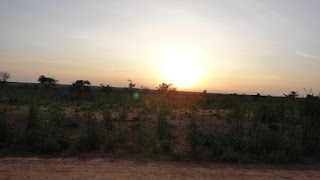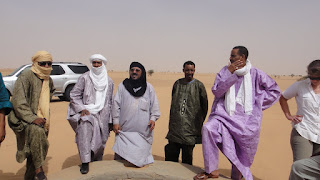Lately there has been a lot of talk about resilience in international development circles. For Niger building resilience to climate change, rising food prices, poor crop yields, and regional violence is particularly relevant. After enduring 3 famines since 2005, millions of families across Niger are locked out of the food-production cycle. The majority have lost animals, are unable to buy seeds for replanting, and lack cash to buy supplementary food. These factors inevitably result in childhood stunting, impeding the development of a sustained and viable future work force. As aptly described in this blog, Sahel Chronic Hunger Crisis Solutions, what is needed for these chronic problems are sustained solutions such as improved irrigation and protection of water sources, promotion of women's rights, teaching people about child nutrition, and utilization of resistant crop varieties and grain stores.
In September our office was given a Food for Peace monetary award from USAID. With the title of Food Assistance to Build Resilience in Communities (FABRIC). The purpose of this award is to provide relief and recovery through food-for-work (FFW) focusing on improved agricultural techniques, women's off-season gardening groups, land recuperation, and nutrition education with the idea that the assistance will provide assets to build resilience to future crises. This is the largest project that our office has ever managed and has stretched and challenged us more than I think any of us ever imagined was possible. And honestly, as I've seen the effects this large project has had on our staff I've doubted if it was a project we should have ever undertaken. It has also raised ongoing questions in my mind about my role in this kind of approach to development. My role in the project is to be he technical advisor for the development of the nutrition education curriculum. It is very removed from being with the people and doing the education myself and seeing how they are applying the information.
The majority of the 1,107 tons of food have been delivered to our warehouse and now in the process of being distributed to the 3,600 designated households.
Last week all of our staff met at the warehouse where our country director thanked us for all of our work and dedication to the project that has allowed us to stand on top of thousands of bags of beans. During his speech he said something that resonated within me--only God know what will be the results of this project, but its possible that this food will keep a child alive who could be the next president of Niger or scientist or teacher. Hearing those words changed my attitude about the project. Its certainly a different approach and my involvement in it is different then I'm used to, but that doesn't mean its bad. And I'm learning that this mantra doesn't just apply to FABRIC, buy my life and work in Niger resulting in resilience in my own heart and soul in a surprisingly odd time.
The increase of French and African forces in Mali and the subsequent killing of ex-pats in Algeria has increased the security situation here in Niger. Security check-points and armed patrols are now a common sight in Niamey. I can no longer visit the field, even with an armed escort. For the first time I went to church with armed guards visibly sitting at the entrance. And last week I was told that I had to limit my running. I wasn't told that I could no longer do it, just not as often or for as long as before. This was a bit traumatic because I had made a deal with myself a couple of months ago that if the security situation deteriorated so much that I could not run, then that would be a sign that it is too risky for me to be here and I would leave. But surprisingly, I don't want to leave and am willing to make the adaptations necessary to stay and keep myself safe and healthy. The adjustment to Niger has been bumpy and I knew I hit an all-time low last December when I burst into tears when our Finance Manager offered me peanuts. There were many days when I found myself praying, asking God to either get me out or get me through the very next minute and in His eternally faithful way, He did. And He still is. He's deepening a resiliency in me through new friendships, opportunities to improve our existing health and nutrition programs, and what I find extremely ironic, through dancing. I'm a terrible dancer and always will be, but I've started taking dance lessons at the American Recreation Center and realized that it can also be a great form of exercise and I can do it indoors, which minimizes my risk of being kidnapped. And I can listen to music while doing it. The other day I was listening to Prayer of the Children and was particularly struck by the following words:
Can you hear the voice of the children
softly pleading for silence in their shattered world?
Angry guns preach a gospel full of hate,
blood of the innocent on their hands.
Crying Jesus, "Help me
to feel the sun again upon my face?
For when darkness clears, I know you're near,
bringing peace again."
Can you hear the prayer of the children?
written by Kurt Bestor
 |
| Visiting a refugee camp for Malians in September |
Recently it has been estimated that over 1,500 Malians will be fleeing the fighting and crossing over to Niger, Mauritania, and Burkina Faso. The Malian refugees who will be arriving in Niger will be predominately arriving in the area where Samaritan's Purse will be distributing food for FABRIC. I am thankful and continue to pray for resiliency in body and soul to respond to these needs.
You can find more information about the current influx of Malian Refugees in Niger here.






























